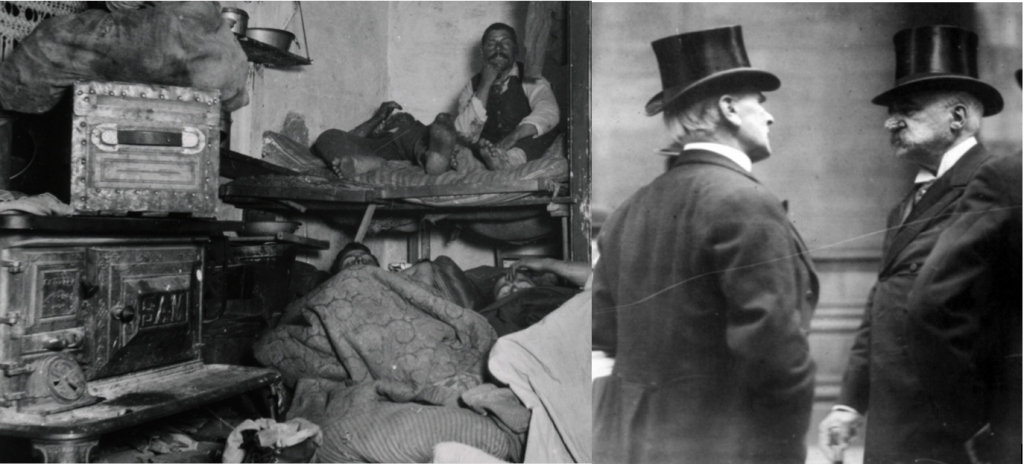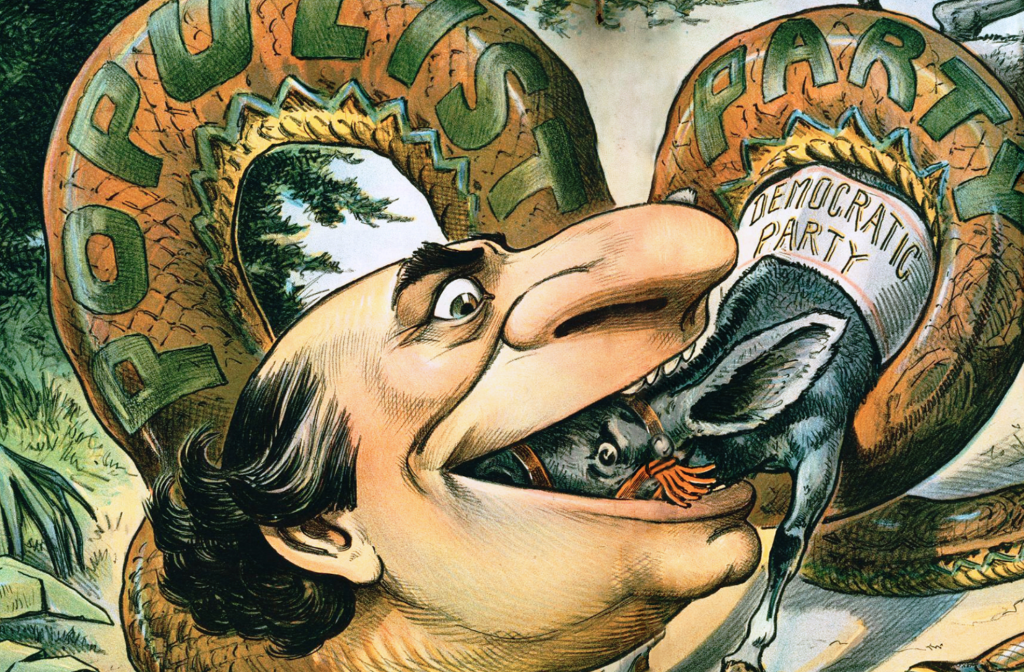“This association of poverty with progress is the great enigma of our times,” –Henry George, Progress and Poverty (1879)

Images from the American Yawp chapter on post-Civil War capitalism: (left) NYC tenement, circa 1890; (right) banker J.P. Morgan, circa 1907
Discussion Questions
- Can you illustrate the paradox that Henry George described and which is embodied by the juxtaposition of the images above with examples from American economic life in the post-Civil War era?
- How did social conflicts over industrialization impact race relations in the decades after the Civil War?
Timeline
- 1873 Panic begins with downturn lasting for several years
- 1877 Farmers’ Alliances begin to organize in Texas
- 1877 Great Railroad Strike creates widespread unrest
- 1886 Protests and violence at Haymarket Square in Chicago
- 1892 Peoples’ Party organizes for presidential campaign
- 1893 Panic begins with an even deeper downturn than 1873
- 1894 Federal government intervenes in railroad strike
- 1896 McKinley defeats Bryan in heated presidential contest
- 1900 US leads world in manufacturing output
- 1901 J.P. Morgan organizes US Steel, the first billion dollar company

Anti-Bryan cartoon from the conservative magazine Judge (American Yawp). According to the Yawp textbook, “[William Jennings] Bryan was among the most influential losers in American political history.” Can you explain why?
- Nearly 100 people died during Great Railroad Strike of 1877 with an estimated $40 million in property damage.
- By the late 1880s, the Knights of Labor had over 700,000 members and the Farmers’ Alliances had over 1.5 million members.
- Between 1895 and 1904, nearly 4,000 companies (representing about 1/5 of the national economy) merged with rivals, creating conglomerates such as DuPont, General Electric, and US Steel.
- By 1900, the richest 10 percent of Americans owned an estimated 90 percent of the nation’s wealth.
- Republicans won 12 out of 16 presidential elections between Civil War and Great Depression.
- Nearly 80 percent of eligible voters cast ballots in the 1896 presidential election.
- In total, during the period around the turn of the 20th century, more than 1,000 socialists won political office in the US. Socialist presidential candidate Eugene Debs received 6 percent of the popular vote in 1912.
